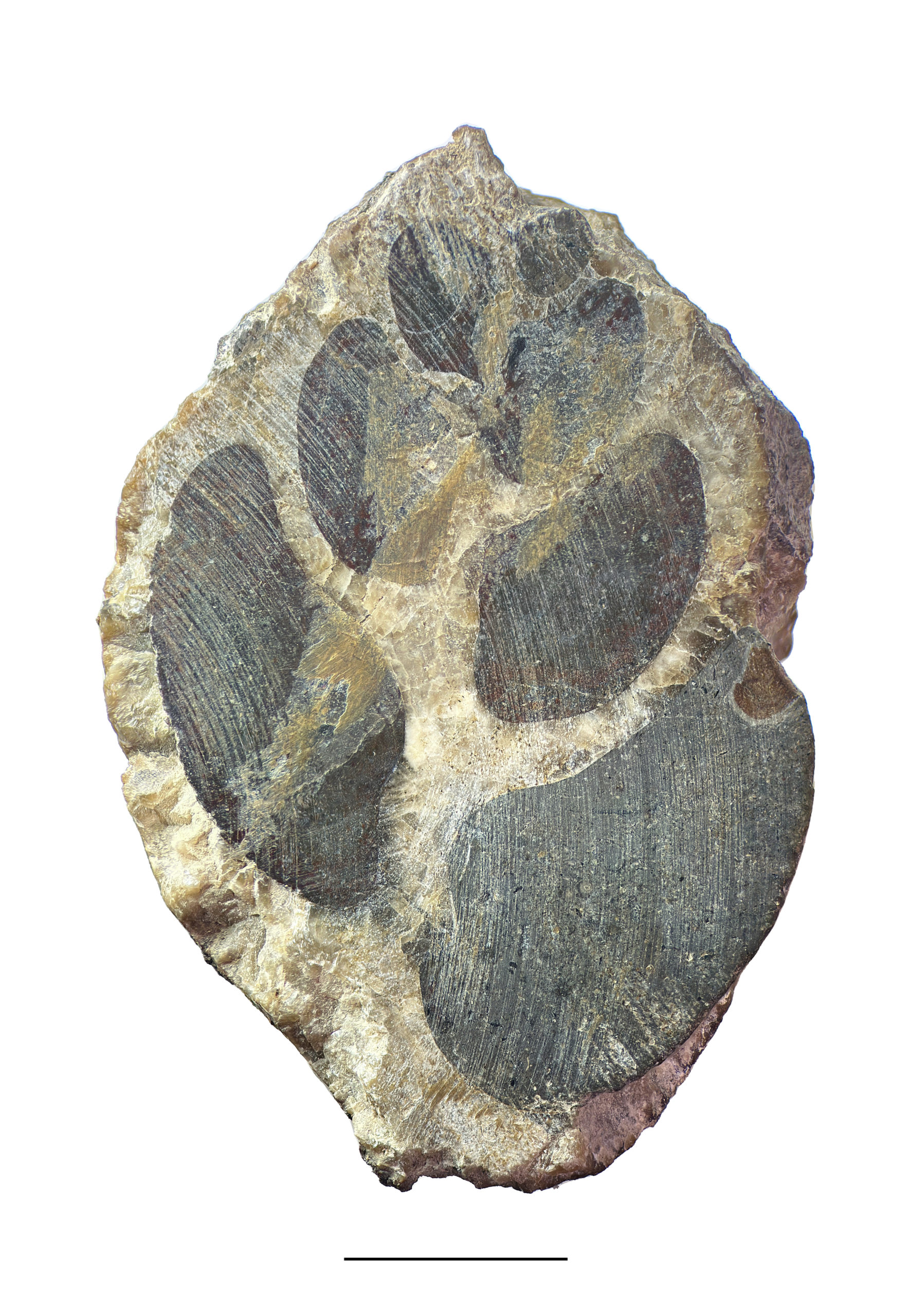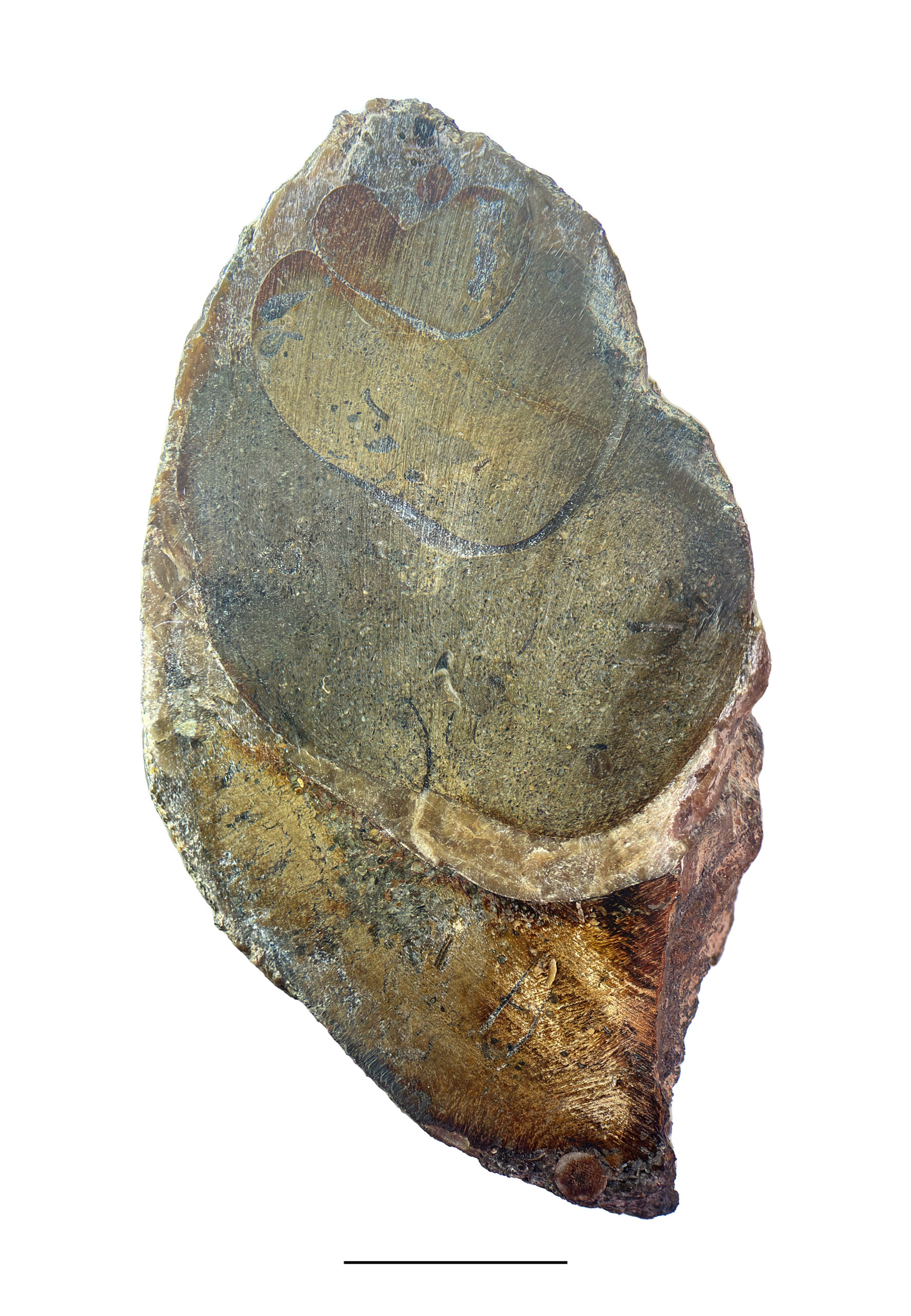A recent discovery of a site with abundant roughly preserved Strobeus shells has piqued my curiosity for cutting them open to see the internal structure. The site occasionally preserves material with intact shells, but they are brittle and can shatter easily. During regular mashing of the limestone, they become disconnected, and their preservation is poor—attempts to free the shells carefully often produce the same results.
The structure of Strobeus varies over its many species, and the differences can be painstaking to detect. A matrix in the aperture often obscures the columnar fold. Removing the matrix is possible but can damage other features of the aperture. Strobeus lacks a nacre layer on its inner shell, thus making it prone to post-burial compression and breakage.
Knight’s Thin Sections
Knight (1931) presented thin sections of many named species in his review of the Subulitidae from the Pennsylvanian Outlier in St. Louis. I’ve had the privilege of reviewing one of these sections, but not one for Strobeus, then called Soleniscus (Macrochilina). My photos are not thin sections but provide similar detail. A thin section gives a better view of shell structures if they are preserved. Shells that have transformed to metastable calcite—such as these Portersville Limestone examples—often lack these features.

Three Cut and Polished Strobeus Specimens
The rest of this story can be told with photographs. Seeing the specimens cut, I am considering a study where I would cut and polish several specimens and study the internal structures. I want to compare the thickness of structures and make a note of shape, form, and details such as broken whorl walls.



And Last, a cut and polished Euphemites callosus
A few specimens of this gastropod appear in the Portersville Limestone and are often very large. The shells are difficult to free beyond whatever portion is sticking out of the limestone during recovery. Trace fossils littered the specimen below, making shell detail challenging to see, and I considered cutting vs storing as-is.

More Cut Fossil Gastropod Specimens ✂
References
- Conrad, T. A., 1835, Description of five new species of fossil shells in the collection presented by Mr. Edward Miller to the Geological Society: Geological Society of Pennsylvania Transactions, v. 1, pp. 267–270
- de Koninck L.G., 1881. Faune du calcaire carbonifère de la Belgique, 3e partie, Gastéropodes. Musée Royale d’Historie Naturelle Belgique Annales, Série Paléontoloque, v. 6, 170 p.
- Girty, G. H., 1915, Fauna of the Wewoka Formation of Oklahoma, U.S. Geological Survey, Bulletin 544, 353 p.
- Hall, J, 1858, Palaeontology of Iowa. Report of the Geological Survey of the state of Iowa, v. 1, pt. 2, pp. 473-724
- Harper, J. A., 1981, The use: and misuse: of Ianthinopsis Meek and Worthen, 1866 (Mollusca: Gastropoda), Journal of Paleontology, v. 55, no. 1, pp. 180-185
- Knight, J. B., 1931, The Gastropods of the St. Louis, Missouri, Pennsylvanian Outlier: The Subulitidae. Journal of Paleontology, v. 5, no. 3, pp. 177–229.
- White, C.A., 1884, Fossils of the Indiana rocks, No. 3: Indiana Department of Geology and Natural History, 13th Annual Report, pp. 107-180

